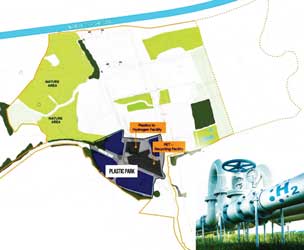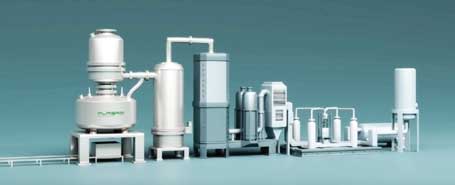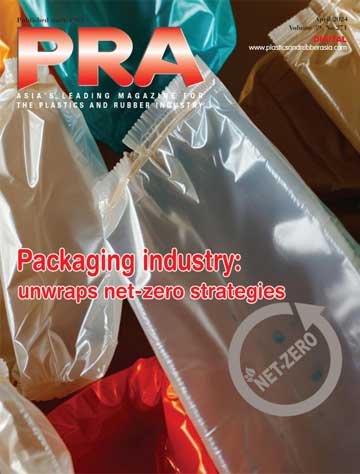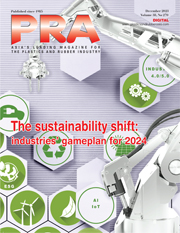Waste-to-hydrogen takes the cue in sustainable energy paradigm
As a vital component in achieving zero-emission fuel, energy storage, and grid stability, hydrogen stands out as a pivotal element in shaping a sustainable future. However, technologies for its extraction are still evolving, and face scrutiny due to environmental risks, says Angelica Buan.
Costly processes to produce hydrogen
Hydrogen, celebrated as a clean alternative to methane, a key component of natural gas extracted from oil and gas fields, claims the title of the lightest and most abundant element. It can be derived from various resources, including natural gas, nuclear power, biogas, and renewable sources like solar and wind energy. This energy-carrier element can be stored, transported, and utilised for power generation. Unlike conventional fuels, hydrogen combustion yields water instead of CO2, making it a climate-friendly energy source.
Governments, alongside diverse sectors, particularly those with significant carbon footprints, and the energy industries, are increasingly turning to hydrogen as a pathway to decarbonisation. Its production can stem from fossil fuels as well as renewable energy sources. New technologies are enabling generation of hydrogen from wastes as feedstock.
Hydrogen applications hold critical importance in sectors where emissions are challenging. The concept of a hydrogen economy, envisioning a future energy system where hydrogen serves as a sustainable energy carrier for various applications such as transportation, electricity generation, and industrial processes, is driving demand for hydrogen.
However, regarded as a promising alternative to fossil fuels, the methods currently employed to produce it either result in excessive CO2 emissions or are prohibitively expensive.
Eliminating plastic wastes via waste-to-hydrogen technology
According to data from the United Nations Environment Programme (UNEP), the world generates a staggering 400 million tonnes/year of plastic waste, and projections indicate a continued rise, with global primary plastic production expected to reach 1,100 million tonnes by 2050.

However, studies reveal that of the 7 billion tonnes of plastic waste, less than 10% has undergone recycling. The financial toll of this inefficiency is significant, with the estimated annual loss in the value of plastic packaging waste during sorting and processing alone ranging between US$80-120 billion, UNEP reported.
For industries constantly seeking solutions to plastic waste, the Waste-to-Energy (WtE) method presents an enticing solution for transforming waste plastics into valuable products, such as hydrogen, regarded as the fuel of the future.
Market potential of waste to hydrogen technology
The process of converting waste materials, typically plastics, into hydrogen is known as Waste-to-Hydrogen (WtH) technology.
The mark et potential for WtH conver sion is substantial, buoyed by increasing public awareness. According to The Brainy Insights, “Waste to Hydrogen Market Size Report 2023-2032”, the global WtE market generated over US$4.6 billion in revenue in 2022, with projections indicating a CAGR of nearly 22.6% from 2023-2032, with the market peaking at US$35.4 billion.

Among the burgeoning businesses investing in WtH technology is UK-based Powerhouse Energy Group. Pioneering a hydrogen-generating plant utilising waste plastics, Powerhouse employs its proprietary Powerhouse DMG technology at the Peel Plastic Park in the North West of England. Positioned within the energy and resource hub Protos, it has been selected as the site for a full-scale commercial application of Powerhouse’s plastics-to-hydrogen technology.
The technology converts unrecyclable plastics, typically disposed of through incineration or export, into synthesis gas (syngas), from which hydrogen is extracted. Once operational, the process becomes self- sustaining, requiring only a small amount of natural gas for initiation. The produced hydrogen will be compressed on-site for transportation via tube trailers or piped to nearby hydrogen fueling centres.

In a similar pursuit, German investment firm Wermuth Asset Management (WAM) has invested in Plagazi, a Swedish clean- tech firm specialising in green hydrogen technology. Plagazi's technology converts various types of waste, including non- recyclable materials, into hydrogen through plasma gasification, with operations across Europe.
One of their projects includes the Köping Hydrogen Park in Sweden, set to produce 12,000 tonnes/year of hydrogen from 66,000 tonnes of waste while providing 10 MW of district heating to the municipality.
WAM's investment, sourced from its Green Growth Fund 2 (GGF2), aims to support Plagazi's growth, with potential additional capital from the upcoming Clean Industrialisation Fund (GGF3). WAM shared that Plagazi's WtH technology offers promising potential for the European circular hydrogen economy.
(PRA)SUBSCRIBE to Get the Latest Updates from PRA Click Here»





